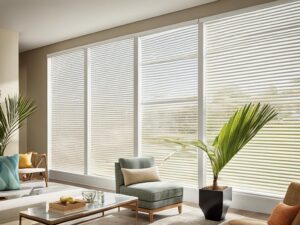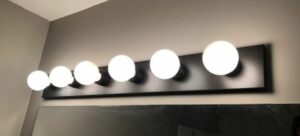When customizing your vehicle, striking the perfect balance between aesthetics and practicality is paramount. Within the realm of car enhancements, few decisions can define your car’s character quite like the selection of window tint. Whether you’re weighing the merits of a 50 vs 35 window tint, seeking the best car window tint comparison, or sifting through the myriad of window tint options, understanding the subtleties between these popular choices can significantly influence the enjoyment and functionality of your ride. This guide is here to provide you with a clear roadmap for choosing the right window tint that aligns with both your personal style and your driving needs.
Key Takeaways
- Understanding the difference in visibility between 50 percent and 35 percent window tint levels.
- Insight into how tint darkness can alter the aesthetic appeal of your vehicle.
- Considerations for daytime and nighttime driving visibility with varying tint shades.
- The importance of factoring in style preferences when selecting window tint.
- How to make an informed decision that balances aesthetics, functionality, and legal compliance.
Exploring the Basics of Window Tint Percentages
When selecting car window tinting options, understanding the implications of tint darkness levels is essential. Window tint percentages signify the amount of visible light that can pass through the automotive window film. This percentage directly correlates to how dark or light the tint appears and affects everything from glare reduction to privacy. Let’s unravel the essence of these percentages and how they influence the driving experience.
The percentage rating is actually an indicator of Visible Light Transmission (VLT)—the higher the number, the more light is allowed through. For instance, a 70% tint permits 70% of the external light to enter, while a 5% tint, also known as a “limo tint,” allows for only 5% light penetration. Therefore, choosing the correct VLT is a matter of balancing your desire for privacy with the need for visibility.
| % Tint (VLT) | Visibility Level | Typical Use Case |
|---|---|---|
| 70% | High Visibility | Windshields/Factory windows |
| 50% | Moderate Visibility | Front/side windows for some sunlight filtration |
| 35% | Reduced Visibility | Common level for personal vehicles; balances privacy with visibility |
| 20% | Low Visibility | Often used for rear windows in personal vehicles |
| 5% | Very Low Visibility | Limo/Private vehicles for maximum privacy |
Understanding automotive window film differences extends beyond VLT. Factors such as the film’s material—dyed, metallized, carbon, or ceramic—play roles in functionality. For example, metallized films offer an efficient way to block heat and UV rays, while ceramic films provide high clarity and strength. The choice ultimately affects the vehicle’s aesthetic, interior comfort, and the level of UV and infrared light rejection.
- Dyed Window Films: Budget-friendly and solid appearance but less effective in heat rejection.
- Metallized Films: Excellent for heat and UV rejection with a shiny appearance.
- Carbon Films: Matte-finish, great for heat rejection without the metal layer.
- Ceramic Films: Top tier for clarity, heat rejection, and durability, but at a higher price point.
In conclusion, the palette of car window tinting options is broad, and the VLT you choose should align with your personal needs, whether it’s to enhance your vehicle’s look, improve privacy, or reduce solar heat and glare. As we explore the nuances of 50% and 35% tints in the following sections, keep these fundamentals in mind to make the most informed decision for your situation.
The Visibility Factor: Understanding 50 Percent vs 35 Percent Tint

Visibility through car windows plays a crucial role in driver safety and comfort. This section offers insights into how 50 percent and 35 percent window tints can affect what you see, both in the gleam of day and the gloom of night.
Daytime Visibility with Different Tint Levels
During the day, a car window tint can influence how much natural light filters into your vehicle. When considering the benefits of 50 percent window tint, one standout feature is the enhanced visibility it offers. It permits ample daylight to enter, providing a clear view of the outside world. In contrast, a 35 percent window tint allows less light in, which could impact your sightline, although it still garners a significant number of proponents who find its visibility satisfactory.
For a practical car window tint comparison, consider the following scenarios in bright conditions:
- A drive through a sunlit urban area may be more comfortable with a 50 percent tint, which can reduce glare while not overly darkening your perspective.
- In contrast, a 35 percent tint might be more beneficial in intense sunlight regions, offering a darker shield against the bright surroundings.
Nighttime Driving: How Tint Darkness Affects Sight
Our ability to see well at night is naturally reduced compared to during the day. Adding tint to car windows can further affect this visibility. The benefits of 50 percent window tint become particularly apparent at night, as it helps maintain better vision of the roadway and surroundings by letting in more light.
While the benefits of 35 percent window tint include greater privacy and aesthetic appeal, it’s important to weigh these against possible reductions in nighttime visibility. Here’s how these tints measure up in darker driving environments:
- With 50 percent tint, drivers often find they can see outdoor details more clearly, which could contribute to safer driving conditions.
- On the other hand, those who choose 35 percent tints might experience a moderate decrease in visibility, yet this level is still popular among nighttime drivers who value a balance between privacy and sight.
It’s clear that both tint options have their own car window tint comparison merits based on the time of day. Safety and legal compliance should remain top of mind when choosing the degree of car window tint that complements both your lifestyle and driving conditions.
Styling Your Ride: Aesthetic Differences Between 50 and 35 Window Tint
When it’s time to choose the perfect window tint for your vehicle, the aesthetic impact is just as crucial as the functional benefits. The debate between 50 vs 35 window tint isn’t simply about how much light they allow; it’s about the statement you want to make with your car. Before we delve into matching your car’s style with the ideal shade, it’s essential to consider the overall look you aim for and how the window tint options align with that vision.
Matching Your Car’s Style with the Right Tint Shade
Finding the right window tint shade can enhance your vehicle’s appearance, adding a touch of elegance or a bold statement. While a 50 percent window tint offers a lighter shade that retains the natural look of your car, a 35 percent tint provides a darker, more sleek appearance. Both options have their unique way of accentuating your car’s features, and the choice boils down to personal preference and the image you want to project.
Comparing Tint Shades on Various Car Models
Every car model has its own personality, and the window tint you choose can either amplify its style or provide a subtle backdrop to its design. Let’s look at how different tints influence the aesthetics of various vehicles:
| Car Model | 50% Tint Impact | 35% Tint Impact |
|---|---|---|
| Sports Car | Enhances sleek lines without overwhelming the design | Intensifies the car’s aggressive style and stance |
| Luxury Sedan | Offers a sophisticated look while maintaining elegance | Lends a mysterious edge to the vehicle’s stately appearance |
| Compact Car | Keeps the car looking light and approachable | Adds an unexpected twist of modernity and depth |
| SUV | Maintains visibility and a family-friendly vibe | Gives a more commanding presence on the road |
The choice between 50 vs 35 window tint can have a distinctive impact on different vehicle models. Whether seeking to complement the sportiness of a coupe or the elegance of a luxury sedan, understanding the car window tint comparison is key to achieving the desired effect. Ultimately, window tint options should harmonize with the car’s color, lines, and your personal aesthetic goals.
50 vs 35 Window Tint: Making an Informed Decision
When it comes to choosing the right window tint for your vehicle, understanding the key differences between 50 and 35 percent tint levels is essential. To make an informed choice that satisfies your personal preferences and adheres to regulations, it’s critical to assess several pivotal factors. These include visibility considerations during both day and night driving, the aesthetic enhancement each option brings to your vehicle’s style, their respective benefits in terms of UV protection and interior preservation, and, of course, the legal implications of your automotive window film choice.
- Visibility Impact: Consider how each tint percentage may affect your ability to see, particularly under different lighting conditions.
- Aesthetic Appeal: Think about which tint shade complements your car’s design and reflects your personal style most effectively.
- Functional Benefits: Evaluate the protective advantages each level of tinting offers against harmful UV rays and interior fading.
- Legal Compliance: Investigate the window tint regulations that apply in your state to ensure your choice is legally permissible.
Embarking on the car window tinting options journey requires a nuanced look at the automotive window film differences to ensure satisfaction in every aspect of your driving experience. The decision between a 50 percent or a 35 percent window tint comes down to striking a balance between practical functionality and individual expression. Both options offer unique sets of advantages that cater to different preferences and needs. Take the time to weigh these factors, and you’ll be well-equipped to make a choice that enhances not only the look but also the comfort and legality of your tinted vehicle windows.
Benefits of 50 Percent Window Tint for Your Vehicle
Opting for a 50 percent window tint is a popular choice among car owners seeking the perfect balance between visibility and privacy. This mid-range tint darkness level offers several advantages that cater to both aesthetic preferences and functional needs. One of the main benefits of 50 percent window tint is the substantial improvement in visibility compared to darker tints. It ensures that drivers have clearer sightlines during both day and night, which is crucial for safe driving.
In addition to enhanced visibility, a 50 percent window tint moderately reduces the amount of solar heat entering your vehicle. This can lead to a more comfortable driving experience, especially in sunnier climates where the interior of cars can heat up quickly. Moreover, less solar heat translates to reduced dependence on air conditioning, potentially improving fuel efficiency. The ability to block solar heat without significantly darkening the windows makes this one of the versatile window tint options available on the market.
- Increased clarity for safer driving conditions
- Significant reduction in solar heat helps maintain a cool vehicle interior
- Provides moderate privacy while still allowing for clear visibility
- Reduces glare, which can be a distraction and hazard while driving
Furthermore, the 50 percent window tint offers a level of privacy that can deter potential break-ins, without giving your car the “limousine look” that darker tints provide. It strikes the right balance for those who want to keep a low profile without sacrificing the functionality of their windows. Lastly, this level of tinting can help in reducing glare from other vehicles’ headlights and the sun, enhancing the comfort of your ride.
While the advantages are abundant, it’s essential to choose a reputable brand when considering various window tint options. A high-quality tint will ensure that these benefits are maximized and that the film remains durable over time. As driver preferences vary, it’s recommended to weigh these benefits to better understand how a 50 percent tint can elevate your driving experience and car’s aesthetics.
The Advantages of Opting for 35 Percent Window Tint
When it comes to choosing the right window tint for your vehicle, many drivers find themselves weighing the pros and cons of each shade. Among the window tint options available, a 35 percent tint offers a sweet spot between aesthetics and functionality, providing a slew of benefits that cater to drivers who prioritize both privacy and protection.
Enhanced Privacy and Security with Darker Tints
The use of a 35 percent tint inherently enhances the privacy within your car, creating a sanctuary for you and your passengers. The darker tint reduces the visibility for outsiders looking in, which serves as a strong deterrent against potential break-ins or theft, as valuables are less visible. Drivers who appreciate a discreet driving experience often opt for this level of tint to secure a more private and secure cabin environment.
UV Protection and Interior Preservation Benefits
One of the most compelling benefits of 35 percent window tint is its capacity to block a significant amount of harmful UV rays. By filtering out the sun’s damaging rays, a 35 percent tint not only protects passengers from potential skin damage but also preserves the vehicle’s interior. Long-term exposure to UV light can cause the dashboard, seats, and other interior components to fade and crack over time. With the application of a 35 percent tint, your car’s interior remains vibrant and intact for the years to come, ensuring your vehicle retains its value and appeal.
- Increased privacy ensures a more secure and personal driving space.
- UV protection reduces the risk of skin damage from sun exposure during driving.
- Preservation of the car’s interior maintains aesthetics and resale value.
- Darker tints contribute to reduced glare, offering a more comfortable driving experience.
Legal Considerations: Navigating Window Tint Laws by State
Choosing the right automotive window film for your vehicle goes far beyond the practical and aesthetic differences; it’s also a legal matter. Across the United States, window tint laws vary significantly by state, making it essential for vehicle owners to understand and adhere to the specific regulations in their region. This not only ensures compliance but also avoids potential fines or removal requirements.
State window tint laws dictate the darkest legal tint applicable to each window of a vehicle. These statutes are in place mainly for safety reasons, ensuring that drivers have necessary visibility, and law enforcement officers can see inside the vehicle during traffic stops. Before making any decisions on your car window tint comparison, let’s dive into what you should consider to stay on the right side of the law.
- Know Your State’s Tint Limits: Research the legal maximum darkness levels allowed for both front and back side windows, as well as the rear window. This information is typically measured by the percentage of Visible Light Transmission (VLT) — the amount of visible light that passes through the film.
- Check for Reflectivity & Color Restrictions: Some states have laws about the reflectivity of window films, as well as prohibited colors — mirror and metallic tints might be off-limits in your area.
- Exemptions: Many states offer exemptions for drivers with certain medical conditions that require protection from the sun. You’ll need proper documentation to qualify for exemption.
- Sticker Requirements: Find out if your state requires a sticker or label to identify legal tinting, and if so, where it should be placed on the vehicle.
- Front Windshield: Most states are quite strict about tinting on the front windshield, often limiting it to a non-reflective tint applied above the manufacturer’s AS-1 line.
Understanding the automotive window film differences and related legal expectations is paramount for any car owner. To assist, here’s a summary to give you a general idea of the type of window tint laws you might encounter:
| State | Front Side Windows VLT% | Rear Side Windows VLT% | Rear Window VLT% | Remarks |
|---|---|---|---|---|
| California | 70% | Any | Any | Reflective tint not allowed |
| Texas | 25% | Any | Any | Reflective tint up to 25% |
| New York | 70% | 70% | 70% | No metallic or mirrored coating |
| Florida | 28% | 15% | 15% | Non-reflective tint allowed above the AS-1 line for windshields |
Please note that this table is for illustrative purposes only and window tint laws are subject to change. It is crucial to consult your local DMV or a lawful authority to obtain the most current regulations. By making well-informed decisions and upholding car window tint comparison to legal standards, you ensure that your ride captures the perfect balance of form, function, and lawful adherence.
Conclusion
Throughout our exploration of 50 vs 35 window tint, we’ve dissected the nuances that may sway your decision when considering window tint options. From the enhanced daytime and nighttime visibility offered by a 50 percent tint to the privacy and UV protection afforded by a 35 percent tint, each choice presents unique benefits. As you stand at this crossroads, it is imperative to balance these attributes against your individual requirements and preferences.
A discerning car window tint comparison has shown that while the 50 percent tint allows for greater natural light and clarity, the 35 percent tint steps up as the gatekeeper of your personal oasis, shielding the interior from prying eyes and the sun’s unforgiving rays. Each tint level shapes not just how you see the world, but also how the world sees you — impacting aesthetic appeal and personal expression on the road.
In closing, your journey to selecting the right car tint should be navigated with an informed and cautious mind, taking into due consideration the legal stipulations set forth by your local jurisdiction. May your decision lead to a harmonious blend of functionality, style, and legal compliance, ensuring that your vehicle is not only a reflection of your taste but also a bastion of comfort and security.
FAQ
What are the main differences between 50 percent and 35 percent window tint?
The primary difference lies in the amount of light each tint allows to pass through. A 50 percent tint permits more light into your vehicle, offering better visibility especially in lower light conditions, while the 35 percent tint allows less light inside, providing greater privacy and a sleeker look but potentially reduced nighttime visibility.
How do I choose the right window tint for my car?
When choosing the right window tint, consider factors such as the typical driving conditions you face, your desire for privacy, the aesthetic you wish to achieve for your vehicle, and the legal tint limits in your state. Evaluate the benefits of both 50 percent and 35 percent options to determine which better aligns with your requirements.
What are the benefits of 50 percent window tint?
A 50 percent window tint offers a balance between visibility and shade. It reduces glare and solar heat moderately without significantly compromising visibility. This makes it a suitable option for drivers who want a lighter tint that provides a balance of functional and privacy benefits.
Can 35 percent window tint provide protection from UV rays?
Yes, a 35 percent tint can effectively block out a significant portion of harmful UV rays, which not only protects the passengers but also helps in preserving the interior of your vehicle from sun damage over time.
Is it easier to see out of a car at night with a 50 percent tint compared to a 35 percent tint?
Generally, yes. A 50 percent tint allows more light to pass through, which can facilitate better visibility when driving at night. A 35 percent tint, being darker, may reduce nighttime visibility to some extent, which is an important consideration for drivers who frequently drive after dark.
Will the same window tint look different on various car models?
Potentially, yes. The appearance of tint can vary depending on a vehicle’s color, body style, and the size and shape of its windows. It’s essential to see examples or simulations of how a particular tint percentage would look on your specific car model to ensure it aligns with your style preferences.
Are there legal considerations to keep in mind when selecting window tint percentages?
Absolutely. Window tint laws vary by state, so it’s important to verify the legal maximum darkness allowed for your vehicle in your location. Compliance is crucial to avoid penalties and ensure that your vehicle passes required inspections.
How does the choice between 50 and 35 percent tint impact my vehicle’s security?
A darker tint like the 35 percent can provide enhanced privacy and security by making it more difficult for outsiders to see inside your vehicle. This can be beneficial for protecting valuables inside the car as well as offering a discreet profile for passengers.
Can window tinting options impact the interior temperature of my vehicle?
Yes, window tints can influence the internal temperature of your car. Both 50 and 35 percent tints can block solar heat to a degree, helping to keep your vehicle cooler on sunny days, though the 35 percent tint may offer slightly superior performance due to its higher level of shading.



